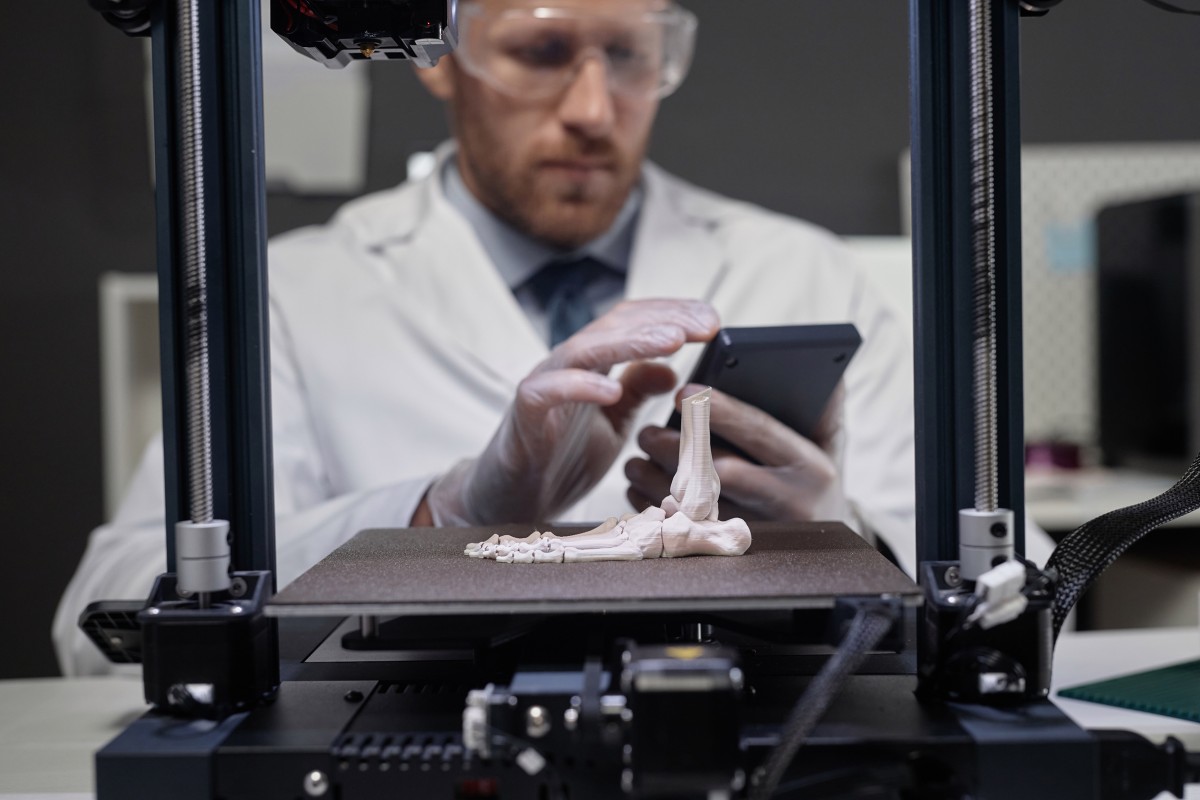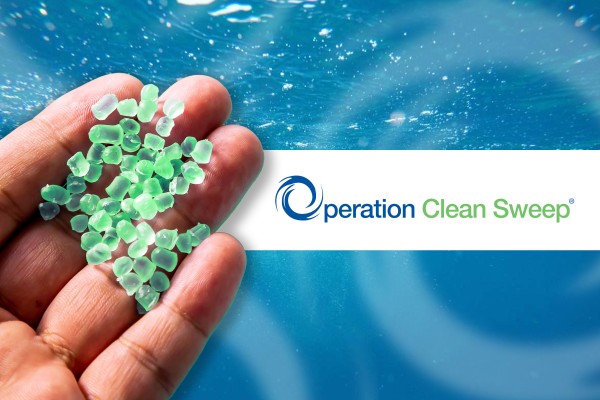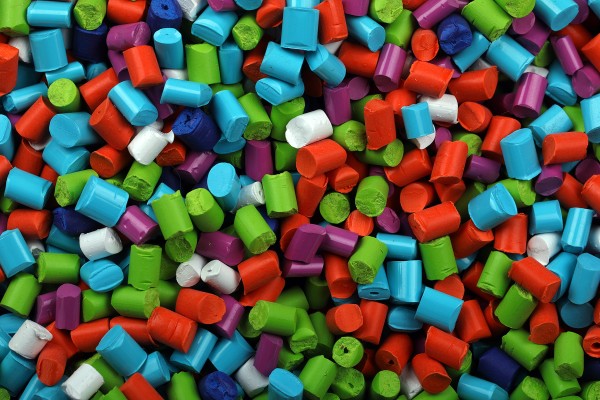Antimicrobial Additives in 3D Printing Filaments

The advent of 3D printing has ushered in a paradigm shift in the way we conceptualise and produce objects. This groundbreaking technology has revolutionised manufacturing processes across a myriad of industries, offering unparalleled design flexibility, material efficiency, and cost-effectiveness. At its core, 3D printing relies on the layer-by-layer deposition of materials, guided by digital blueprints, to construct three-dimensional objects from the ground up.
As the adoption of 3D printing continues to soar, its applications have expanded into diverse sectors, ranging from healthcare and aerospace to automotive and consumer goods. However, as with any transformative technology, new challenges and opportunities arise, prompting the need for continuous innovation. One such opportunity lies in the integration of antimicrobial properties into 3D printing materials, specifically filaments, to address the growing demand for enhanced hygiene and microbial control.
In industries where hygiene is paramount, such as healthcare, food processing, and aerospace, the incorporation of antimicrobial additives into 3D printing filaments has become a game-changer. These additives inhibit the growth of microorganisms on printed surfaces, ensuring a cleaner and more hygienic environment for end-users.
This article explains the use of antimicrobial additives in 3D printing filaments, exploring their significance, mechanisms, and industry-specific applications. It aims to provide a comprehensive understanding of this innovative technology, positioning it as a valuable resource for industry professionals, academics, and anyone interested in the intersection of 3D printing and antimicrobial solutions.
Antimicrobial Additives in 3D Printing Filaments
Antimicrobial additives play a crucial role in inhibiting the growth of microorganisms on surfaces. In the context of 3D printing, these additives are incorporated into filaments during the manufacturing process, imparting antimicrobial properties to the resulting 3D printed objects.
The mechanisms by which antimicrobial additives function can vary, but they typically involve one or more of the following processes:
- Disruption of cell membranes: Certain antimicrobial additives can disrupt the cell membranes of microorganisms, leading to the leakage of essential cellular components and ultimately causing cell death.
- Interference with metabolic pathways: Some antimicrobial additives can interfere with crucial metabolic pathways within microorganisms, preventing them from carrying out essential functions and hindering their growth and reproduction.
- Generation of reactive oxygen species: Antimicrobial additives can generate reactive oxygen species (ROS), such as hydrogen peroxide or singlet oxygen, which can damage cellular components and lead to oxidative stress, ultimately killing the microorganisms.
- Inhibition of enzyme activity: Antimicrobial additives may also inhibit the activity of enzymes essential for microbial growth and survival, effectively halting their metabolic processes.
The choice of antimicrobial additive and its mechanism of action largely depend on the intended application, the target microorganisms, and the desired level of antimicrobial efficacy.
A variety of antimicrobial additives can be incorporated into 3D printing filaments, each with its unique properties and advantages. One of the most used antimicrobial additives is Silver based. Silver ions have long been recognised for their antimicrobial properties. These additives can be effective against a wide range of microorganisms, including bacteria, fungi, and viruses.
Incorporation of Antimicrobial Additives into 3D Printing Filaments
The process of incorporating antimicrobial additives into 3D printing filaments typically occurs during the filament manufacturing stage. The antimicrobial additives are added to the base polymer material, which is then extruded into filament form using specialised equipment.
The incorporation of antimicrobial additives can be achieved through various methods, including:
- Melt compounding: In this process, the antimicrobial additive is mixed with the polymer resin in a molten state, ensuring uniform dispersion throughout the material. The molten mixture is then extruded into filament form.
- Solvent-based techniques: For polymers that are soluble in specific solvents, the antimicrobial additive can be dissolved or dispersed in the solvent along with the polymer. The resulting solution or dispersion is then extruded or cast into filament form, and the solvent is subsequently removed.
- In-situ polymerisation: In this method, the antimicrobial additive is incorporated during the polymerisation process of the polymer itself, ensuring homogeneous distribution within the polymer matrix.
The choice of incorporation method depends on factors such as the compatibility of the antimicrobial additive with the polymer, the desired concentration and distribution of the additive, and the processing conditions required for filament extrusion.
It is essential to ensure proper dispersion and distribution of the antimicrobial additive throughout the filament to achieve optimal antimicrobial efficacy in the final 3D printed product. Additionally, the concentration of the additive must be carefully controlled to strike a balance between antimicrobial performance and potential impacts on the mechanical and physical properties of the printed object.
Industry Applications
The integration of antimicrobial additives into 3D printing filaments has opened up new possibilities across various industries, addressing specific hygiene and microbial control challenges.
Healthcare and Medical Devices
The healthcare industry has been at the forefront of adopting antimicrobial 3D printing solutions, driven by the critical need for stringent hygiene standards. 3D printed medical devices, implants, and surgical tools with antimicrobial properties offer numerous benefits:
- Reduced surface contamination: Antimicrobial 3D printed devices and equipment can contribute towards mitigating the risk of microbial contamination on a products surface.
- Personalised medical solutions: 3D printing enables the production of custom-fitted medical devices and implants tailored to individual patient needs. By incorporating antimicrobial additives, these personalised solutions can provide enhanced product protection against microbial growth.
- Surgical planning and training: 3D printed anatomical models with antimicrobial properties can be used for surgical planning and training purposes, allowing healthcare professionals to practice on realistic replicas while maintaining a hygienic environment.
Case Study: Antimicrobial 3D Printed Surgical Guides
In a collaborative effort between researchers at the University of Nottingham and the Queen's Medical Centre in Nottingham, UK, antimicrobial 3D printed surgical guides were developed to aid in orthopaedic procedures. These guides, designed to fit specific patient anatomy, were 3D printed using a filament embedded with silver-based antimicrobial additives.
The incorporation of antimicrobial properties aimed to reduce the risk of surgical site infections, which can lead to serious complications and longer hospital stays. During the study, the antimicrobial surgical guides demonstrated significant antimicrobial activity against common pathogens like Staphylococcus aureus and Escherichia coli.
By leveraging the precision of 3D printing and the antimicrobial properties of the filament, these surgical guides not only improved the accuracy of orthopaedic procedures but also enhanced hygiene.
Aerospace and Defence
In the aerospace and defence sectors, where precision, reliability, and safety are paramount, the need for antimicrobial properties in 3D prints arises from several crucial factors:
- Hygiene in Aerospace Components: Aircraft and spacecraft components are subject to stringent hygiene standards to ensure safe operation and longevity. Any microbial contamination on critical parts could compromise performance and hygiene levels. Incorporating antimicrobial additives into 3D printing filaments helps mitigate microbial growth on these components.
- Maintenance and Repair: Despite rigorous maintenance procedures, microbial contamination can occur in hard-to-reach areas or components with complex geometries. Antimicrobial 3D printed parts can help address this issue, reducing the risk of microbial growth and ensuring optimal hygiene during repair and maintenance operations.
- Space Exploration and Extended Missions: In space exploration missions, where astronauts spend prolonged periods in confined environments, maintaining a hygienic habitat is crucial. Antimicrobial 3D printed components in spacecraft interiors and equipment can help mitigate the risk of microbial contamination, ensuring a more hygienic environment for astronauts during extended missions.
- Regulatory Compliance and Safety: The aerospace and defence industries adhere to strict regulatory standards and certifications to ensure the safety and reliability of their products. Incorporating antimicrobial additives into 3D printing filaments enables manufacturers to meet regulatory requirements related to hygiene and microbial control.
Case Study: Antimicrobial 3D Printed Aircraft Interior Components
In collaboration with the European Space Agency (ESA), Airbus Defence and Space explored the use of antimicrobial 3D printed components for aircraft interiors. The project aimed to address the potential buildup of microorganisms on high-touch surfaces within aircraft cabins.
Researchers developed a filament embedded with silver-based antimicrobial additives and used it to 3D print various interior components, such as tray tables and armrests. These components were thoroughly tested and demonstrated significant antimicrobial activity against common pathogens like Staphylococcus aureus, Escherichia coli, and Candida albicans.
By incorporating antimicrobial properties into 3D printed aircraft interior components, Airbus aimed to enhance passenger hygiene whilst also reducing maintenance costs associated with microbial growth and contamination.
Automotive and Transportation
While the primary focus of antimicrobial additives in automotive applications may not be as evident as in sectors like healthcare, it remains a crucial consideration, particularly in shared mobility and autonomous vehicle contexts. In ride-sharing services and autonomous vehicles, where multiple passengers may come into contact with interior surfaces, maintaining hygiene is essential. Antimicrobial 3D printing filaments can be used to produce interior components and high-touch surface parts with in-built antimicrobial properties, ensuring a more hygienic environment for occupants.
Moreover, the integration of antimicrobial additives into 3D printed automotive components can contribute to overall vehicle hygiene, reducing microbial growth and associated odours.
Consumer Goods and Household Products
In the consumer goods sector, where hygiene is paramount, the integration of antimicrobial properties into 3D printed products is increasingly important. From kitchen utensils and food packaging to personal care items and household gadgets, consumer goods come into frequent contact with users, increasing the risk of microbial contamination. Antimicrobial 3D printing filaments can address this by inhibiting the growth of bacteria, and other microorganisms on printed products, ensuring a more hygienic experience.
By incorporating antimicrobial additives into 3D printing filaments, consumer goods companies can enhance the hygiene standards of their products, providing consumers with added peace of mind and confidence in the integrity of their purchases. This can lead to improved brand reputation, customer satisfaction, and potentially reduced product returns or complaints related to microbial contamination.
Industrial Applications and Additive Manufacturing
3D printing technology, has had a profound impact on industrial applications. The ability to produce complex parts, tools, and products with intricate geometries and customised designs has revolutionised traditional manufacturing methods, offering businesses a new avenue for innovation and efficiency.
In industrial settings, where hygiene and microbial control are crucial, the integration of antimicrobial additives into 3D printing filaments has opened new possibilities for enhancing product quality. From manufacturing tools and fixtures to end-use components, antimicrobial 3D printed parts can help mitigate the risk of microbial contamination of surfaces.
Regulatory Landscape and Compliance
As the integration of antimicrobial additives into 3D printing filaments continues to gain traction across various industries, it is crucial to navigate the regulatory landscape and ensure compliance with relevant standards and certifications. Different industries and regions may have specific requirements and guidelines governing the use of antimicrobial agents in products and materials.
The healthcare industry is subject to stringent regulations to ensure patient safety and product efficacy. Antimicrobial additives used in 3D printed medical devices must comply with standards set by regulatory bodies such as the U.S. Food and Drug Administration (FDA), the European Medicines Agency (EMA), and other regional authorities.
In the United States, the FDA regulates antimicrobial agents used in medical devices through the 510(k) premarket notification process or the Premarket Approval (PMA) pathway, depending on the device classification and risk level. Manufacturers must provide evidence of the antimicrobial agent's safety, efficacy, and compatibility with the intended use.
The International Organisation for Standardization (ISO) has also established guidelines for evaluating the antimicrobial activity, including ISO 22196 for testing the antibacterial activity on plastics and other non-porous surfaces.
The aerospace and defence industries operate under strict regulatory frameworks to ensure the safety and reliability of aircraft, spacecraft, and related components. Antimicrobial additives used in 3D printed aerospace parts must comply with relevant standards and specifications.
In the United States, the Federal Aviation Administration (FAA) and the Department of Defence (DoD) have established guidelines and certification processes for the use of antimicrobial materials in aerospace applications. These agencies may require extensive testing and documentation to validate the performance, compatibility, and safety of antimicrobial additives.
The European Aviation Safety Agency (EASA) and other international regulatory bodies also have specific requirements for the use of antimicrobial agents in aircraft components and systems.
The use of antimicrobial additives in consumer products is regulated by various governmental agencies and organisations to ensure consumer safety and environmental protection. In the United States, the Environmental Protection Agency (EPA) regulates antimicrobial agents under the Federal Insecticide, Fungicide, and Rodenticide Act (FIFRA).
Manufacturers must ensure they use EPA registered additives for their antimicrobial products. The EPA also establishes guidelines for labelling and marketing claims related to antimicrobial properties.
In the European Union, the Biocidal Products Regulation (BPR) governs the use of antimicrobial agents in various product categories, including consumer goods. Antimicrobial additives must undergo a thorough evaluation process to ensure their safety and efficacy before being approved for use in the EU market.
Compliance with these regulatory frameworks is crucial for businesses operating in the antimicrobial 3D printing domain. Partnering with reputable suppliers and consulting with regulatory experts can help navigate the complex landscape and ensure that products meet the necessary standards and certifications.
Emerging Trends and Future Outlook
As the adoption of antimicrobial 3D printing solutions continues to grow, the industry is poised for further innovation and advancement. Emerging trends and future projections suggest exciting possibilities for enhancing antimicrobial properties, exploring new applications, and addressing sustainability concerns.
Potential New Applications
As the understanding and adoption of antimicrobial 3D printing solutions expand, new applications across various sectors are likely to emerge. In the food and beverage industry, antimicrobial 3D printed components could be utilised in food processing equipment, packaging, and utensils to enhance food safety and extend shelf life.
The agricultural sector may also benefit from antimicrobial 3D printed solutions, such as irrigation systems, greenhouse components, or farming tools.
Additionally, the integration of antimicrobial properties into 3D printed building materials and architectural components could revolutionise the construction industry.
Collaboration and Knowledge Sharing
The future success of antimicrobial 3D printing solutions lies in fostering collaboration and knowledge sharing among stakeholders, including researchers, manufacturers, regulatory bodies, and end-users. Cross-disciplinary collaborations can drive innovation and address complex challenges, such as optimising manufacturing processes, and navigating regulatory frameworks.
The establishment of industry-wide standards, best practices, and knowledge-sharing platforms can facilitate the dissemination of research findings, case studies, and successful implementations, accelerating the adoption and advancement of antimicrobial 3D printing solutions across various sectors.
Conclusion
The integration of antimicrobial additives into 3D printing filaments represents a significant milestone in the pursuit of enhanced hygiene and microbial control across diverse industries. As this innovative technology continues to evolve, it holds the potential to revolutionise the way we approach product design, manufacturing, and hygiene management.
By harnessing the power of antimicrobial 3D printing solutions, industries can unlock a myriad of benefits, including the reduced opportunity for microbial contamination in various applications. From medical devices and aerospace components to consumer goods and industrial tools, the possibilities are vast and far-reaching.
As highlighted throughout this article, the successful implementation of antimicrobial 3D printing solutions requires a multifaceted approach. It involves a deep understanding of antimicrobial mechanisms, material science, and manufacturing processes, as well as a commitment to navigating complex regulatory landscapes and ensuring compliance with relevant standards and certifications.
Furthermore, the future of antimicrobial 3D printing solutions lies in continuous innovation and collaboration. Researchers, manufacturers, and industry stakeholders must work together to explore new frontiers, including sustainable practices, and novel applications across various sectors.
By embracing the transformative potential of antimicrobial 3D printing, we can pave the way for a future where hygiene, and innovation converge seamlessly, driving progress and improving the quality of life for people around the world.
References and Further Reading
Antimicrobial Additves in 3D Printing Filaments: Transforming Industries Through Innovative Hygiene Solutions
- Willocks, P. (2024). "Antimicrobial Additves in 3D Printing Filaments: Transforming Industries Through Innovative Hygiene Solutions". 3D Adept Magazine. https://3dadept.com/wp-content/uploads/2024/08/VERSION-DIGITAL-DP-3D-ADEPT-Mag-July-August-2024.pdf
Introduction to 3D Printing:
- Lipson, H., & Kurman, M. (2013). Fabricated: The New World of 3D Printing. Wiley. https://www.wiley.com/en-us/Fabricated%3A+The+New+World+of+3D+Printing-p-9781118350638
Applications in Diverse Sectors:
- Ventola, C. L. (2014). "Medical Applications for 3D Printing: Current and Projected Uses." Pharmacy and Therapeutics, 39(10), 704-711. https://www.ncbi.nlm.nih.gov/pmc/articles/PMC4189697/
- Wohlers, T., & Gornet, T. (2016). "History of Additive Manufacturing." In Additive Manufacturing Technologies (pp. 25-46). Springer. https://link.springer.com/book/10.1007/978-1-4939-2113-3
Antimicrobial Additives in 3D Printing:
- Rizzello, L., & Pompa, P. P. (2014). "Nanosilver-based antibacterial drugs and devices: Mechanisms, methodological drawbacks, and guidelines." Chemical Society Reviews, 43(5), 1501-1518.
Mechanisms of Antimicrobial Additives:
- Hajipour, M. J., et al. (2012). "Antibacterial properties of nanoparticles." Trends in Biotechnology, 30(10), 499-511.
- Xiu, Z. M., Zhang, Q. B., Puppala, H. L., Colvin, V. L., & Alvarez, P. J. J. (2012). "Negligible particle-specific antibacterial activity of silver nanoparticles." Nano Letters, 12(8), 4271-4275.
Incorporation Methods:
- Vaithilingam, J., et al. (2016). "Multifunctional Antimicrobial Polymers for 3D Printing." 3D Printing and Additive Manufacturing, 3(2), 71-76.
- Guo, S., et al. (2015). "In-situ polymerization of antimicrobial nanocomposites for 3D printing." Journal of Materials Chemistry B, 3(27), 5361-5368.
Industry Applications:
- Tappa, K., & Jammalamadaka, U. (2018). "Recent Advances in Biomaterials for 3D Printing and Tissue Engineering." Journal of Functional Biomaterials, 9(1), 22.
- Bartolo, P., et al. (2018). "Biomedical applications of polymers 3D printing." International Journal of Polymer Science, 2018.
Case Studies:
- Clark, K. D., et al. (2019). "Development of Antimicrobial 3D Printed Surgical Guides." Journal of Orthopaedic Research, 37(6), 1360-1368. https://onlinelibrary.wiley.com/doi/10.1002/jor.24296
- Nguyen, T. T., et al. (2020). "3D Printed Antimicrobial Filaments for Aerospace Applications." Advanced Engineering Materials, 22(8), 2000280.
Regulatory Landscape:
- U.S. Food and Drug Administration (FDA). (2020). "Premarket Approval (PMA)."
- International Organisation for Standardization (ISO). (2019). "ISO 22196: Measurement of antibacterial activity on plastics and other non-porous surfaces."
Emerging Trends:
- Zhu, Y., et al. (2020). "3D Printing with Antimicrobial Polymers: From Functionalized Inks to Direct Printing." Advanced Healthcare Materials, 9(3), 1901382.
- Mota, C., Puppi, D., Chiellini, F., & Chiellini, E. (2020). "Additive manufacturing techniques for the production of tissue engineering constructs." Journal of Tissue Engineering and Regenerative Medicine, 14(12), 1087-1100. https://onlinelibrary.wiley.com/doi/10.1002/term.3050
What Next?
🔗 Follow us on Social Media, here is our LINK TREE
✉️ See how our additive technology can benefit your business by CONTACTING US
🦠 Find out more about Biomaster Antimicrobial Technology HERE
🎥 Watch our video on how Biomaster works WATCH NOW
📰 Subscribe to our Newsletter - SUBSCRIBE
← Back to blog



